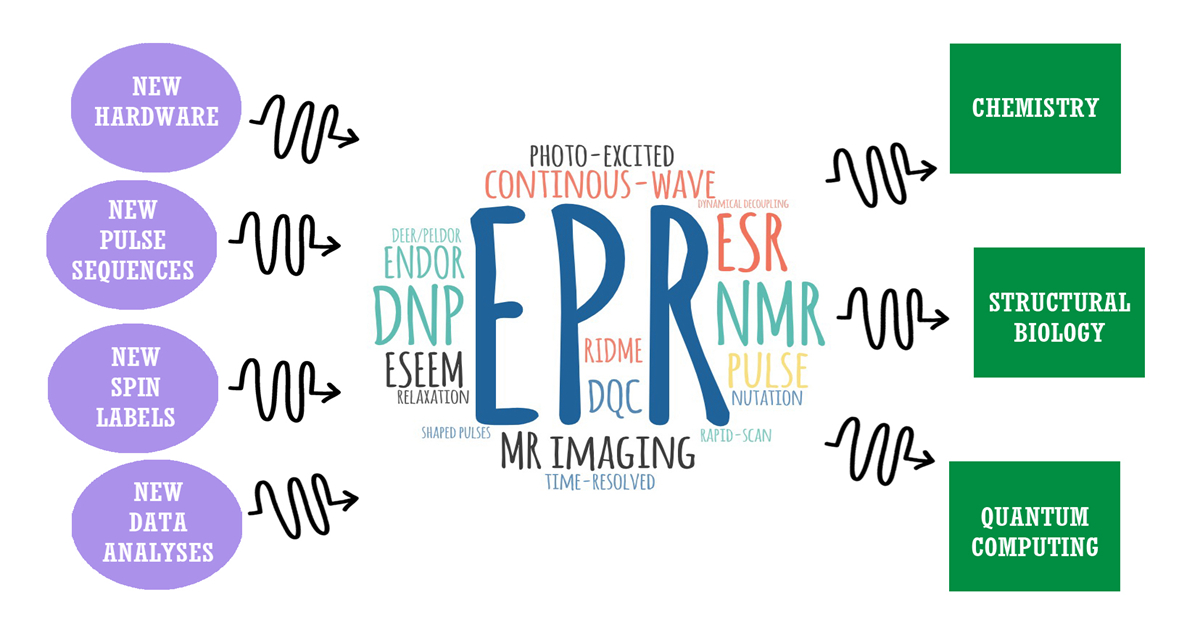EPR Spectroscopy in Chemistry and Biology
A special issue of Magnetochemistry (ISSN 2312-7481). This special issue belongs to the section "Magnetic Resonances".
Deadline for manuscript submissions: closed (20 August 2022) | Viewed by 27973

Special Issue Editors
Interests: electron paramagnetic resonance (EPR); double electron-electron resonance (DEER); hyperfine spectroscopy; metal ions; bioinorganic chemistry
Special Issues, Collections and Topics in MDPI journals
Special Issue Information
Dear Colleagues,
Electron paramagnetic resonance (EPR or synonymously ESR) has proven to be a spectroscopic technique of great significance in understanding structural elements in chemical and biological organizations. Particularly, EPR-based distance measurements and hyperfine spectroscopic techniques together with traditional continuous-wave EPR (cw-EPR) can offer, respectively, a plethora of long (2–8 nm) and short (<1 nm) range structural information which is challenging to obtain with other techniques.
This Special Issue is devoted to EPR applications in Chemistry and Biology, as well as to relevant methodological developments, facilitated by improved hardware, new pulse sequences, and new EPR spin labels.
Dr. Angeliki Giannoulis
Dr. Dinar Abdullin
Guest Editors
Manuscript Submission Information
Manuscripts should be submitted online at www.mdpi.com by registering and logging in to this website. Once you are registered, click here to go to the submission form. Manuscripts can be submitted until the deadline. All submissions that pass pre-check are peer-reviewed. Accepted papers will be published continuously in the journal (as soon as accepted) and will be listed together on the special issue website. Research articles, review articles as well as short communications are invited. For planned papers, a title and short abstract (about 100 words) can be sent to the Editorial Office for announcement on this website.
Submitted manuscripts should not have been published previously, nor be under consideration for publication elsewhere (except conference proceedings papers). All manuscripts are thoroughly refereed through a single-blind peer-review process. A guide for authors and other relevant information for submission of manuscripts is available on the Instructions for Authors page. Magnetochemistry is an international peer-reviewed open access monthly journal published by MDPI.
Please visit the Instructions for Authors page before submitting a manuscript. The Article Processing Charge (APC) for publication in this open access journal is 2200 CHF (Swiss Francs). Submitted papers should be well formatted and use good English. Authors may use MDPI's English editing service prior to publication or during author revisions.
Keywords
- electron paramagnetic resonance (EPR/ESR)
- chemical model systems
- structural biology
- proteins
- distance measurements
- double electron–electron resonance (DEER/PELDOR)
- continuous-wave EPR (cw-EPR)
- hyperfine spectroscopy
- paramagnetic metal ions
- spin labels
- pulse sequences
- arbitrary waveform generators (AWG) units
Benefits of Publishing in a Special Issue
- Ease of navigation: Grouping papers by topic helps scholars navigate broad scope journals more efficiently.
- Greater discoverability: Special Issues support the reach and impact of scientific research. Articles in Special Issues are more discoverable and cited more frequently.
- Expansion of research network: Special Issues facilitate connections among authors, fostering scientific collaborations.
- External promotion: Articles in Special Issues are often promoted through the journal's social media, increasing their visibility.
- e-Book format: Special Issues with more than 10 articles can be published as dedicated e-books, ensuring wide and rapid dissemination.
Further information on MDPI's Special Issue polices can be found here.






